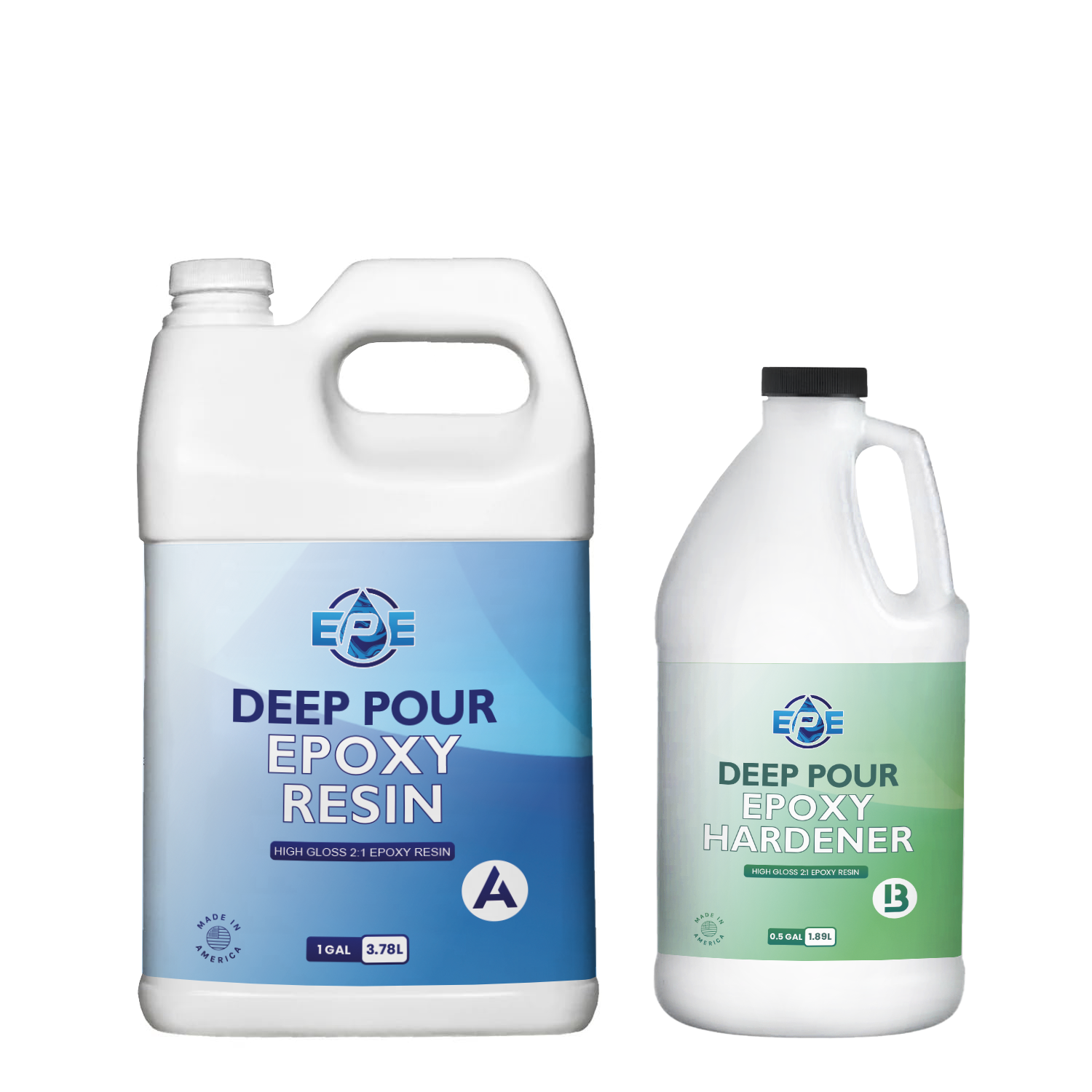Your Cart is Empty
Offering ShopPay at Checkout. Buy Now, Pay Later!
Offering ShopPay at Checkout. Buy Now, Pay Later!

Deep Pour Epoxy
October 26, 2023 2 min read
Instructions:
-
Safety First:
- Work in a well-ventilated area.
- Wear gloves, safety glasses, and protective clothing to avoid skin and eye contact.
- Avoid eating, drinking, or smoking when handling epoxy.
-
Prepare the Surface:
- The surface should be dry, clean, and free of dust, oil, or contaminants.
- If the surface is porous (like wood), consider using a seal coat of a thin epoxy to prevent air bubbles during the deep pour.
-
Measure & Mix:
- Measure out the epoxy and hardener in the ratio specified (for 2:1, that's 2 parts epoxy to 1 part hardener by volume).
- Pour the hardener into the epoxy (not the other way around).
- Mix thoroughly for at least 5 minutes. Ensure you scrape the sides and bottom of your mixing container. Be careful not to whip too much air into the mixture.
-
Pouring:
- Pour the mixed epoxy slowly into your mold or the area you want to fill.
- For deep pours, you might want to pour in layers to avoid overheating and excessive bubbles. Check the manufacturer's guidelines on the maximum recommended thickness for a single pour.
-
Remove Air Bubbles:
- After pouring, you might notice air bubbles. These can be removed by using a heat gun or propane torch. Gently sweep across the surface to pop the bubbles. Be cautious not to burn the epoxy or stay in one place too long.
-
Cure Time:
- Allow the epoxy to cure based on the manufacturer's recommended time. This can vary, but many deep pour epoxies can take 24-72 hours for an initial cure and up to a week for a full cure.
- The curing process is exothermic, meaning it releases heat. Avoid touching the surface during curing, as it can get quite hot.
-
Demolding and Finishing:
- If you've used a mold, once the epoxy has sufficiently cured, you can remove it from the mold.
- You can then sand, polish, or finish the epoxy surface as desired.
-
Cleanup:
- Uncured epoxy can be cleaned with acetone or isopropyl alcohol.
- Cured epoxy can be mechanically removed (sanding, scraping).

